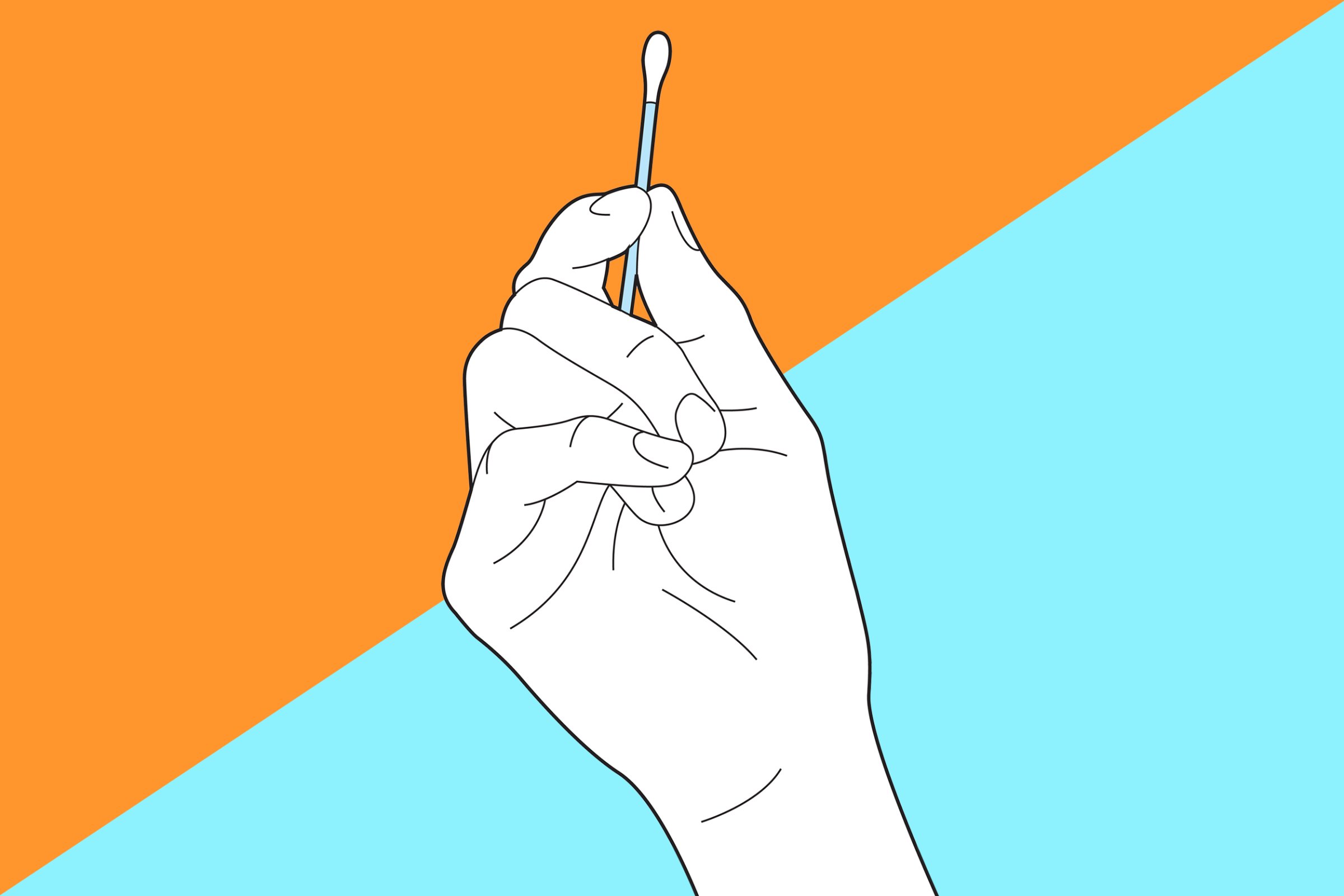
It says right there on the packaging: “Do not insert swab into ear canal.” Speak with an ear-nose-and-throat doctor, and you’ll hear the same thing.
“We always say, ‘Never put anything smaller than your elbow in your ear,’ ” says Dr. Martin Burton, a professor of otolaryngology at the University of Oxford in England. Jam a Q-tip (or a finger) in there, and you could damage or irritate the ultra-delicate skin of your ear canal, introduce sickness-causing bacteria or even puncture your ear drum, Burton says.
“Swab incidents are really a common clinical thing we see,” adds Dr. Peter Svider, an otolaryngology resident at Wayne State University in Michigan. Svider’s research shows cotton swab calamities are a major cause of ear-related ER visits among U.S. adults. “The way the cotton swab is designed—it’s really not a good tool for removing wax,” Svider explains. “You tend to push more in than you pull out.”
To his point, expert surveys suggest roughly half of the U.S. population suffers from some level of earwax impaction, or a plugging of the ear canal due to wax that’s been jammed into it. “If you get enough wax pushed back there, it can completely block the ear canal,” says Dr. Brett Comer, an assistant professor of head and neck surgery at the University of Kentucky.
That blockage can cause pain or muffle hearing and has also been linked to thinking problems. Clearing the blockage requires a doctor or specialist’s intervention. “It can also involve an operation if it’s so tightly packed in there that our normal methods can’t remove it,” Comer says.
So just how are you supposed to clean out all of that gunky wax?
You really aren’t, Burton says. There’s wax in your ears for a reason; it ensnares and expels dirt, dust, small insects and other bits of grossness that would otherwise finagle their way into your body, he explains.
Earwax is also antibacterial, Svider says. Composed of dead skin cells, fatty acids and a little cholesterol, wax is effective at trapping and killing illness-causing microorganisms. “Some people say their ears itch because of wax buildup, but it’s usually just the opposite,” he says. “If you clean all the wax away, your ear canal can get dried out and irritated, and then it starts to itch.”
You don’t want all that wax to linger in your ears forever. But your body has a very effective, built-in “conveyor belt mechanism” for removing wax without the aid of a swab, Svider says. The everyday acts of talking and chewing naturally shuffle wax from your inner ear to the outside of its canal, where the wax falls away on its own or is washed away when you shower—no picking or swabbing required. “For 99 percent of people, that conveyor belt mechanism works well,” he adds.
A small number of people do overproduce earwax. “Some people seem to make more wax, and that wax can block the ear canal and impair hearing,” Burton explains. Those folks will need to check in with their ear doctor from time to time for professional removal.
But the rest of us are better off keeping cotton swabs—or anything else—out of our ears.
More Must-Reads From TIME
- The 100 Most Influential People of 2024
- Coco Gauff Is Playing for Herself Now
- Scenes From Pro-Palestinian Encampments Across U.S. Universities
- 6 Compliments That Land Every Time
- If You're Dating Right Now , You're Brave: Column
- The AI That Could Heal a Divided Internet
- Fallout Is a Brilliant Model for the Future of Video Game Adaptations
- Want Weekly Recs on What to Watch, Read, and More? Sign Up for Worth Your Time
Contact us at letters@time.com